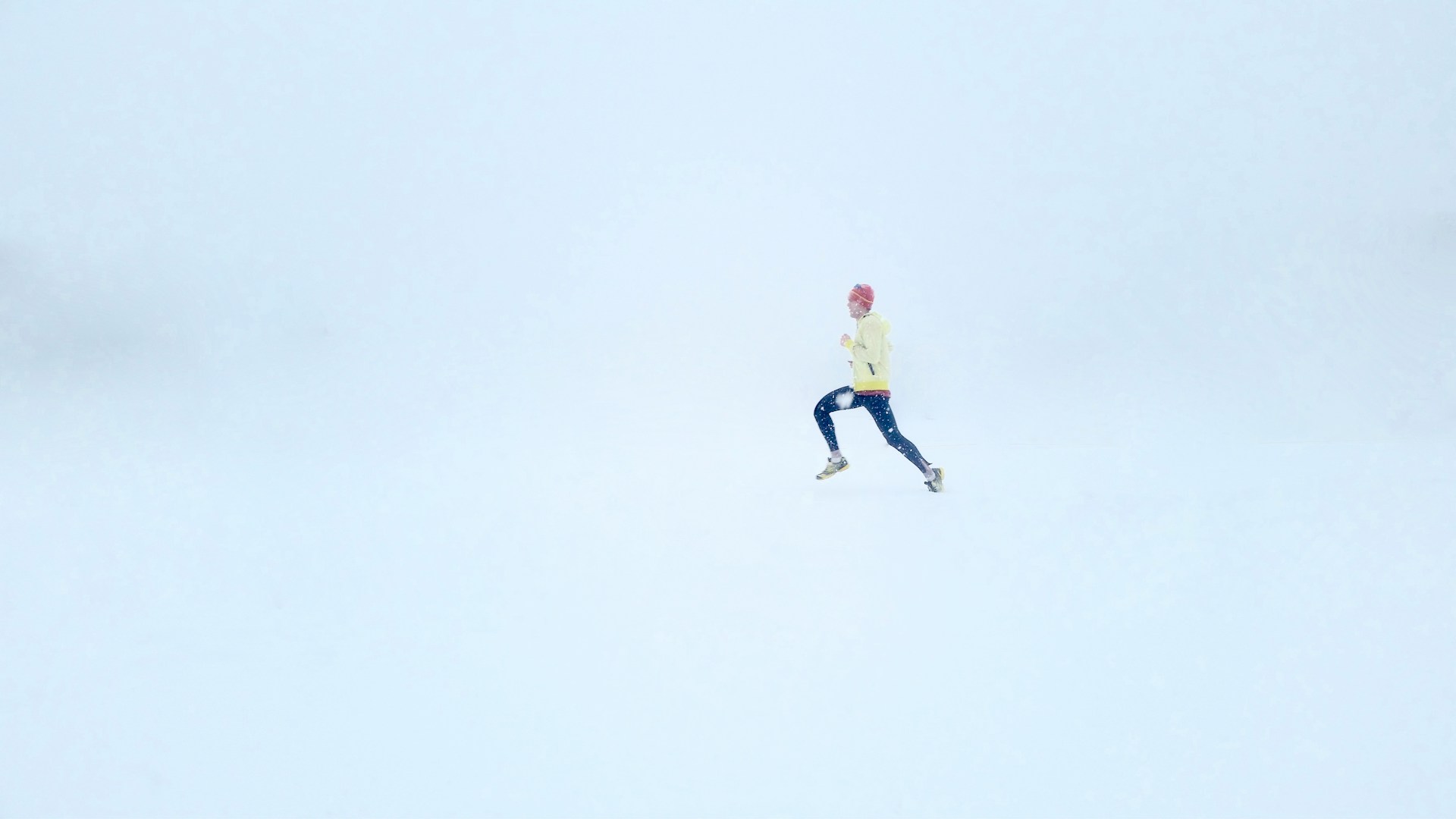It’s true that it snows less and less on the plains now, but for this very reason running in the snow is a joy not to be missed. In fact, if running is the manifestation of freedom, doing so with a white cloak under your feet is the return to the purest emotions. The muffled noises, the pure air that whips the nostrils, the white that changes perspectives are sensations that should not be missed. However, it’s not all snow that shines, and although it’s a really tough and effective workout, it’s worth keeping a few small precautions in mind.
Running in snow: everything you need to know
If you don’t live in the mountains, if you haven’t grown up with many months of snow a year, if you don’t know how to judge by eye what type of snow it is, running in the snow could become more of an ordeal – with some risk – than a real fun. So read our guide to snow running and then keep an eye on the weather forecast to take advantage of the next snowfall.
1. The right shoes
Trivial, but fundamental. No, your summer running shoes are not good: look at the sole, so smooth and sliding on asphalt and track, and ask yourself why you even change your car tires in winter. For running on snow the same rule applies: a little tread is essential, so bring out some trail shoes. Even better if you have specific winter ones, with a rubber compound that gives its best at low temperatures. If they also have a waterproof and breathable membrane – Gore-Tex but also OutDry or some proprietary brand – you have everything you need for your feet.
2. The right snow
Yep, not all snow is created equal. There is the soft and floury one that has just fallen, which will be a nightmare for those who drive but it is perfect for racing because it still ensures grip and a stable step, but there is also the one with a mille-feuille of ice underneath that hides dangers at every step, or the soggy mid-day one. In short, every snow has its own pace, as skiers who have developed a refined sensitivity to snow conditions know well.
3. Forget about performances
Of course, nothing stops you from starting your sportwatch or Strava, but what you are looking for and should expect is certainly not performance. Maybe the distances yes – although it is much, much more tiring – but the times no, they will never be the same. Trivial but true. After all, we said it right away, running on the snow is an experience of pure joy to be enjoyed step by step.
4. Change your pace
Asphalt runner strides or trail runner strides don’t work when you’re running in snow. Short, frequent steps, with little flight phase to always feel the ground better and avoid surprises underfoot are the best thing you can do. No, it’s not really like running, it’s more like running as a kid, and that can also be a great workout for your legs and muscles.
5. Red alert for descents (and also climbs)
If even in normal conditions climbs and descents require you to change your running technique a bit, imagine when there is snow under your feet which can hide ice and be slippery and treacherous. So even more attention, sensitivity on the feet and eyes wide open.
6. Don’t overdress
The temptation, especially for the first experiences of running on snow, would be to dress up a lot. But running, like any aerobic activity, heats the body and causes it to sweat. Even if there are a few degrees on the thermometer. A thermal baselayer, a windproof jacket, running tights (but if you don’t want to) and then above all cover the extremities, i.e. head, hands and feet, with socks suitable for running in winter. The important thing, obviously, is not to stop: you leave the house when you’re a little cold, you warm up in a few minutes, you get to temperature, and you don’t stop until you get home, warm.
7. Protect your nose and mouth from the cold
Here, more than a heavy jacket, you need something that protects the mucous membranes of your nose and mouth. It is no coincidence that cyclists in winter wear a balaclava or a buff that protects the airways: when you run your breathing becomes labored, and the freezing air in the airways is an excessive shock.
READ ALSO: 5 tips for enjoying racing in the snow
Photo by Isaac Wendland / Diana Parkhouse / trail
Advertising
